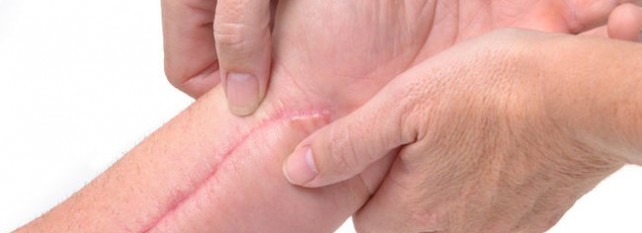Scar formation is your body’s natural response to injuries such as cuts, surgery, radiation, burns etc.
Massage can improve the recovery from a wound and the long term effects of scarring .

The healing progress of a scar consists of two phases: Immature and Mature.
Immature Scar Treatment
Immediately after a wound heals the scar is immature. It is usually red and may even be itchy and sensitive. Massage at this immature stage has the greatest positive effect on a scar.
Mature Scar Treatment
When scar tissue is no longer produced (this can take up to 18 months depending on the size and depth of the wound), the massage approach needs to be disciplined if an effective result is to be achieved.
Generally, the earlier and more consistently scar tissue is massaged, the less possibility of developing any long-term issues.
Scars vary
Scar formation varies greatly from person to person. Scars may become hard and less flexible than surrounding tissue/skin. The skin often tightens around the area, almost like a shrink-wrap effect. This in turn may limit range of motion and compromise normal function, depending on the location of the scar, especially if it crosses over a joint. If a scar is not managed properly it may become dry and re- open . This is especially a concern for skin grafts.
Massaging scar tissue
Massaging scar tissue can help minimize any of the following secondary scar tissue problems. Remember: the earlier and consistent the massage, the better the result.
The resulting abnormal stress on a scar’s surrounding structures may include:
- Lack of blood flow
- Accumulation of lymphatic fluid around scar tissue
- Pain
- Numbness or tingling
- Nerve impingement
- Restriction in flexibility and range of movement
- Muscle wasting or weakening (atrophy)
- Lack of oxygen to tissue (hypoxia)
- Postural misalignment
- Increased potential for future injuries
